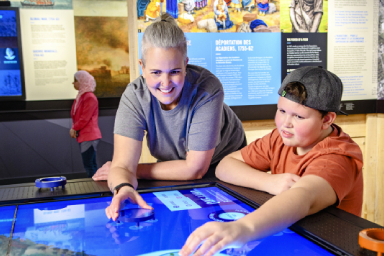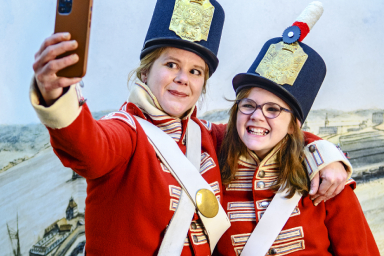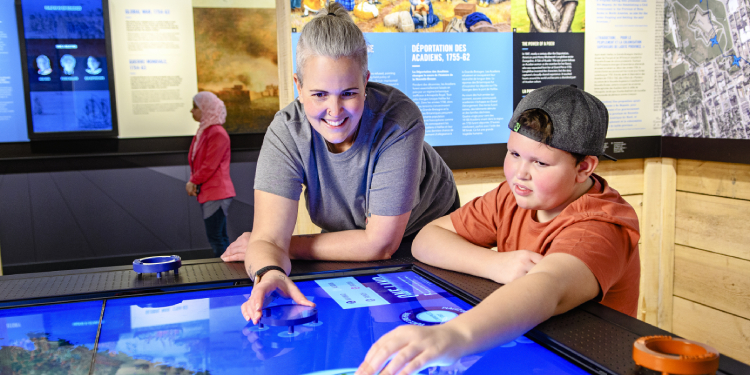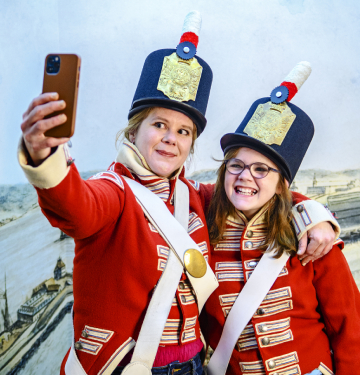
Broader storytelling at the Halifax Citadel
Halifax Citadel National Historic Site: a new exhibit shows how conflict shaped the fort, the city of Halifax, Mi’kma’ki, and the Atlantic region.
The evolution of an exhibit
Designated a national historic site in 1952, the Halifax Citadel is the fourth in a series of forts built by the British between 1749 and 1856 to protect the city’s strategic port. Today, the site is an iconic part of Canadian history and is among the nation’s most significant and beloved cultural landmarks.
Sharing a more inclusive story
A missing layer of history
When Parks Canada staff began brainstorming a new exhibit titled Fortress Halifax: A city shaped by conflict, their initial focus was the history of the 4 citadels which have occupied the site since the 1700s. But once planning began, they realized they needed to take a broader view of the history and bring in more perspectives. Working closely with the Confederacy of Mainland Mi’kmaq, they began expanding upon the scope of the exhibit.
Long before the British arrived, the Mi’kmaq were a nation in Mi’kma’ki (the ancestral land of the Mi'kmaq) which included Kjipuktuk (“the Great Harbour”) and held an entirely different worldview from that of Europeans. Bringing Mi’kmaw perspectives to the exhibit provided a chance to dispel myths that the British arrived to an unknown wilderness. Rather, their arrival led to the first historical conflict at the site, between two colliding peoples who saw nature and the stewardship of the land in very different ways.
Working together towards a broader understanding
As research on the exhibit evolved, stories of the Mi’kmaq, Acadians, French and African Nova Scotians, previously treated as peripheral to the site’s history, became a significant part of the narrative. In addition to the Confederacy of Mainland Mi’kmaq and other Indigenous groups, Parks Canada staff worked closely with the African Nova Scotian and Acadian communities on the exhibit.
One land, four peoples
The result of this research and collaboration is Fortress Halifax, the largest and newest exhibit at the Citadel, which fills over 550 square metres within the historic stone fort.
In addition to the military history associated with the site, the new exhibit communicates experiences of Mi’kmaq, Acadians, African Nova Scotians, British colonists and soldiers, women and men, refugees of wars and the marginalized. A digital map exploration experience called One Land, Four Peoples, allows users to explore a map of the region that reveals a different map layer depending on whether they choose a British, French, Acadian, or Mi’kmaw cultural lens. Digital journals provide readers with more in-depth options to engage with the exhibit’s themes.
Renowned Mi’kmaw artist Leonard Paul was commissioned to create images of events which, while well documented, had no visual record.


Fortress Halifax provides visitors with a captivating blend of traditional and interactive exhibit elements that show how the history of Canada is best understood from multiple perspectives. It tells a broader, more inclusive story of the long history of the Citadel, the region, and the peoples who have called it home.
- Date modified :

